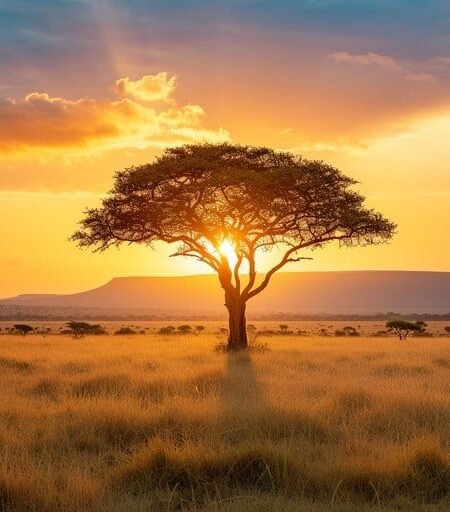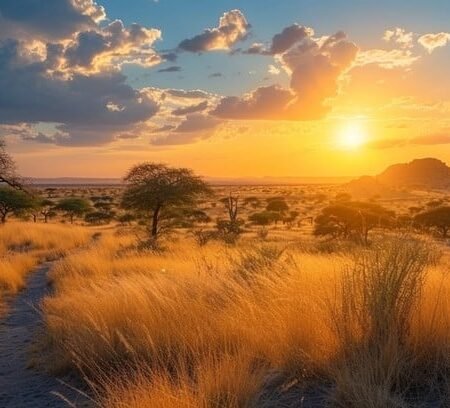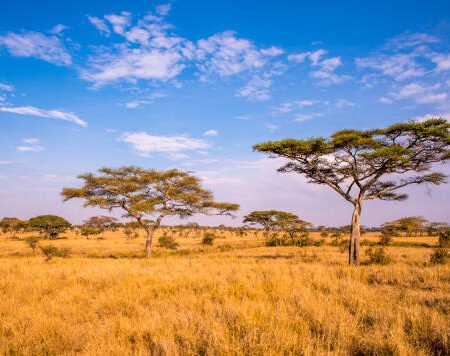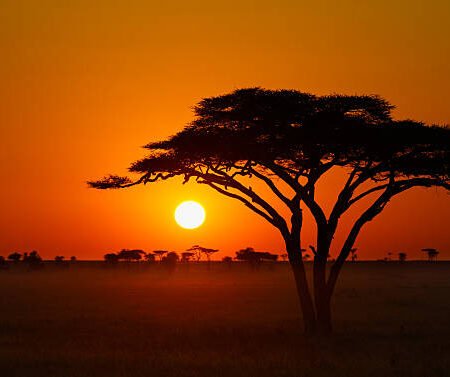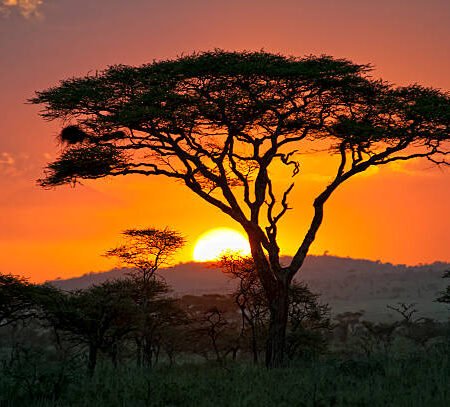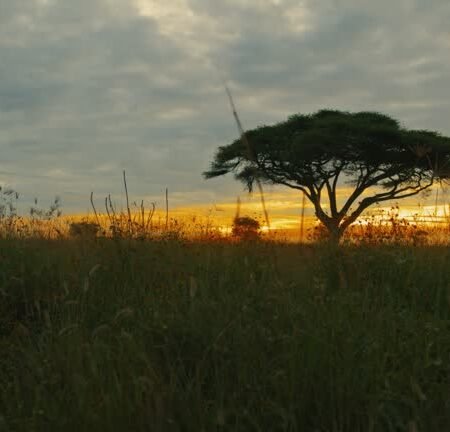
As the African sun begins its swift, decisive descent towards the horizon, the vast expanse of the Kenyan savannah undergoes a profound transformation. This is the Golden Hour, a fleeting, magical interlude where the harsh glare softens into a luminous, honeyed glow that seems to pour across the land like liquid amber. And in this radiant bath, no element is more iconic or more beautifully illuminated than the solitary silhouettes and intricate forms of the Acacia trees.
These ancient sentinels, symbols of resilience in the dry grasslands, become the undisputed stars of the landscape. The low-angled sunlight streams almost horizontally, catching every twist and gnarl of their distinctive trunks, often bleached pale by decades of sun, now warmed to a rich ochre or deep russet. It highlights the intricate, fissured bark, turning each scar and knot into a story etched in light and shadow. The most striking are the Umbrella Thorn Acacias (Vachellia tortilis), whose wide, flat-topped canopies are transformed into intricate lattices against the rapidly coloring sky. Sunlight filters through their tiny, feathery leaves, setting the entire crown ablaze with a translucent, fiery green-gold. Each delicate leaf appears to be individually backlit, glowing from within, creating a halo effect around the dark branches.
The light sculpts the land. Long, dramatic shadows stretch eastwards from every trunk and termite mound, painting the tawny grasses in stripes of deep indigo and molten gold. Dust motes, kicked up by passing herds or the evening breeze, dance in the luminous air, becoming flecks of suspended fire. The light doesn’t just fall on the acacias; it interacts with them. Silhouetted against the deepening apricot, tangerine, or rose hues of the sunset sky, their stark, angular forms become graphic masterpieces of black cut-paper art. Yet, when viewed from the side, they radiate warmth, their branches glowing like embers.
